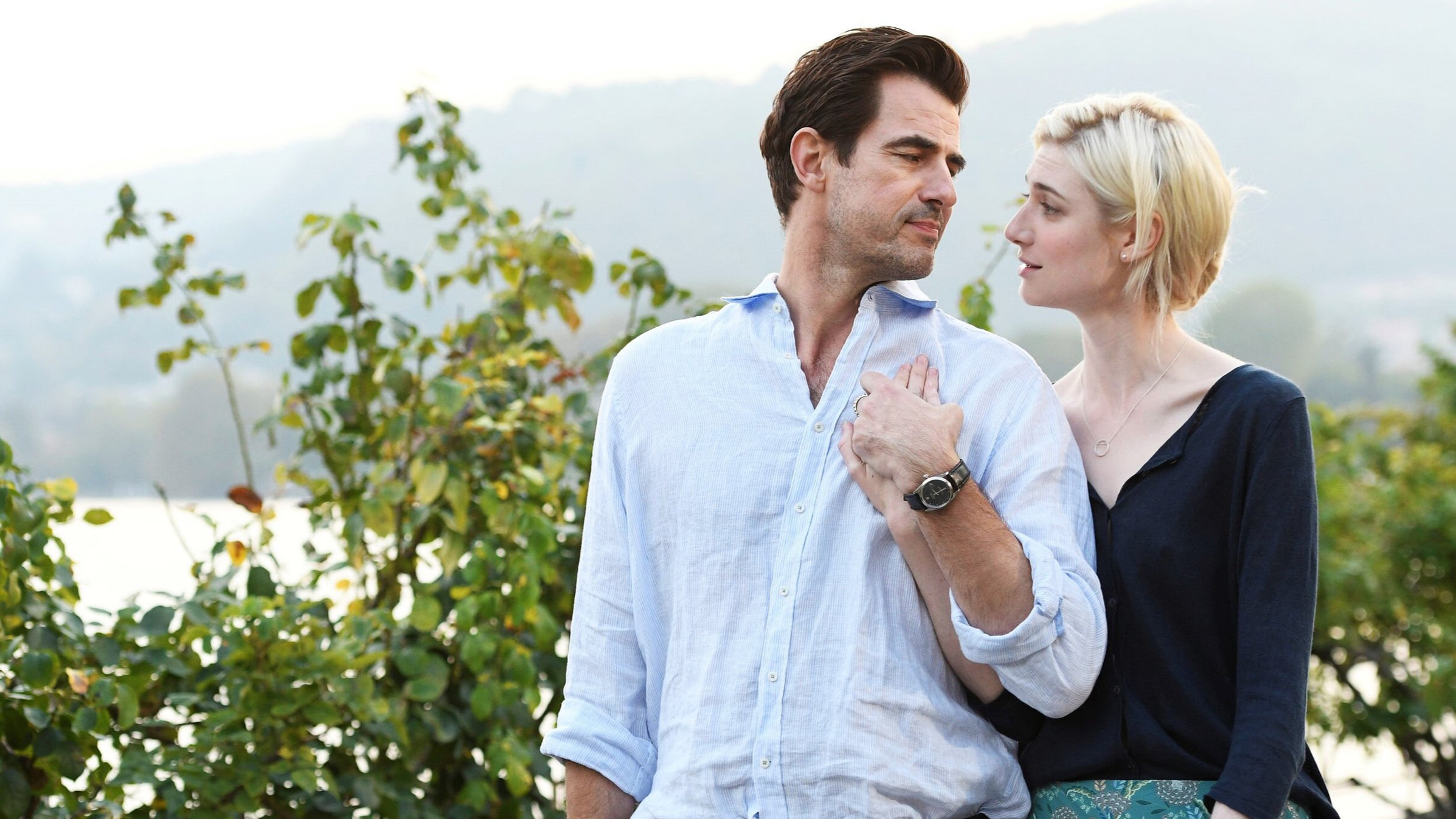The Burnt Orange Heresy
An art-world thriller in the vein of Patricia Highsmith is a thing of elegance.
Not art for art's sake: Claes Bang and Elizabeth Debicki
What do you want? Something maybe that nobody desires as much as you do? Jerome Debney has spent his life searching for the perfect blue. He found it once, catching sight of the sky as he surfaced from a swimming pool. And he has sought to recreate that blue ever since. Films about passion, particularly such singular ones, make for fascinating drama. Indeed, in the words of the art collector Joseph Cassidy, “a thing’s worth should never obscure its value.”
Starting with all the confidence of a filmmaker with no need to impress, Giuseppe Capotondi’s The Burnt Orange Heresy – adapted from the novel by Charles Willeford – introduces us to James Figueras (Claes Bang). Figueras is on his exercise bike in Milan rehearsing a lecture, an event which we are shortly privy to. Then, in front of an attentive audience, he explains the value of an abstract work with an intriguing back story. Figueras is an art critic with a speciality in the brushstrokes of Modigliani, among other things – but he is tiring of the lecture circuit. He then meets Berenice (Elizabeth Debicki), they make out and he invites her to meet Cassidy, with an eye to securing an interview with Debney, the J.D. Salinger of the art world.
It is a rare thing to find a film that is self-assured enough to be what it is. Here, the Italian director Giuseppe Capotondi offers no tricks, no insistent music, no unnecessary exposition or flashbacks. With its duelling arguments on art, a soundtrack of Handel, Mozart and Tartini, the stunning environs of Lombardy and the elegant, poised presence of Debicki, the world of The Burnt Orange Heresy is a sybaritic pleasure. It is Debicki, as an American tourist, who proves to be the fly in the ointment – but only because her life doesn’t depend on art.
Following a one-night stand with Figueras, she is invited to stay at Cassidy’s palatial home, a villa perched on the edge of Lake Como. Cassidy has a Rothko hung modestly beside the mantelpiece – partially obscured by objets d’art – and to emphasize his English eccentricity, he is played by Mick Jagger (quite effectively, as it happens). And to complete the accomplished quartet, Donald Sutherland pops up in a delicious turn as Debney, dispensing wisdom as only an 84-year-old icon can.
But Claes Bang is our leading man. He made his name in the Palme d'Or-winning The Square (2017) and cemented it with the title role in Netflix’s Dracula. Now he taps into the smarmy charisma of Pierce Brosnan, who played another art world slickster in The Thomas Crown Affair. James Figueras is bright and charming, but he is also ambitious – and unscrupulous. He has spent his life searching for the perfect ruse and as the film dips into Patricia Highsmith territory, Figueras abuses his position and those who trust him…
As a thriller, The Burnt Orange Heresy – named after a Debney work – earns its right to shock and it does so with genteel expertise.
JAMES CAMERON-WILSON
Cast: Claes Bang, Elizabeth Debicki, Mick Jagger, Donald Sutherland, Rosalind Halstead, Alessandro Fabrizi.
Dir Giuseppe Capotondi, Pro William Horberg, David Lancaster and David Zander, Screenplay Scott Smith, from the novel by Charles Willeford, Ph David Ungaro, Pro Des Totoi Santoro, Ed Guido Notari, Music Craig Armstrong, Costumes Gabriella Pescucci, Dialect coach Tanera Marshall.
Indiana Production/MJZ/Rumble Films/Wonderful Films/HanWay Films/Ingenious-Sony Pictures.
98 mins. USA/Italy. 2019. Rel: 30 October 2020. Cert. 15.


